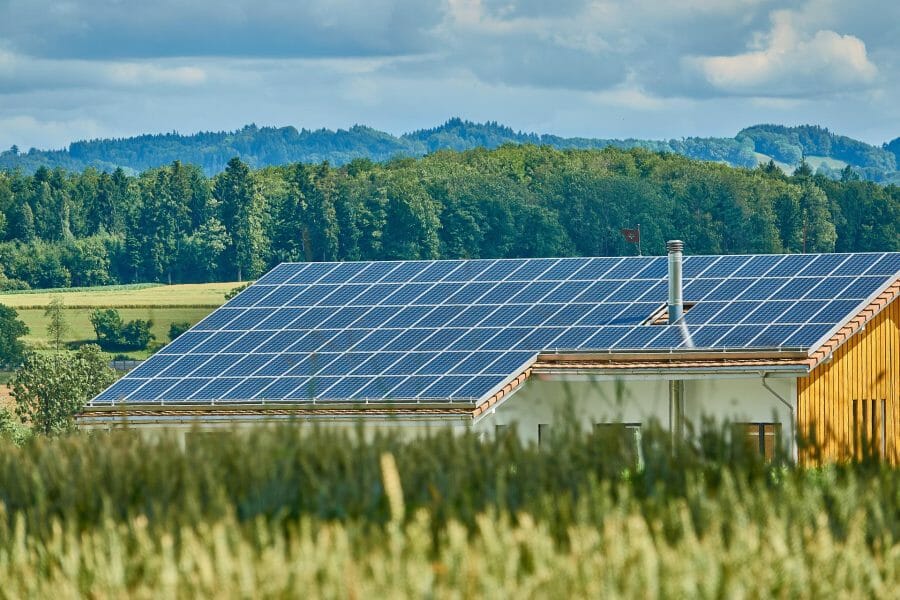It seems like every day we hear new predictions about how dramatically climate change will affect the earth if we don’t reduce our fossil fuel usage and carbon emissions. We’ve been hearing it for decades, but we’ve been reluctant to change as a people. Luckily, public and corporate sentiments have begun changing recently, and we are finally making meaningful strides to address the issue.
As we’ve observed a noticeable climate change driven increase in severe storms and sea level rise since the pre-industrial era that shows no signs of slowing, more and more people are pushing for beneficial electrification. It may very well be the answer to some of our most pressing climate and energy issues of today. It can even save us a good deal of money, which is on many people’s minds these days.
NTC’s Product Development team is well into developing our education approach to reaching K-12 communities about the very real need for electrification across the country. We’ve launched our pilot program, Electrification Nation, a web series that aims to spread awareness and basic comprehension of all things electrification, from demystifying how renewable energy works to how easy it is to fuel up an electric vehicle for a cross country road trip.
But first – what is beneficial electrification, and how is it going to save the environment?
What Is Electrification?
Electrification is a term for the process of replacing the things that run on fossil fuels like propane, natural gas, and gasoline with things that run on clean, renewable sources of electricity.
Some examples might include swapping your aging gas-guzzler with an electric vehicle or fitting your roof with solar panels to provide your home energy needs. Not only can these simple changes save you a good deal of money at the gas pump and on your energy bill, but the fact that you aren’t burning fossil fuels to power your home and vehicle is incredibly valuable to the environment.
How Is Beneficial Electrification Different?
The definition of beneficial electrification is slightly different from the electrification definition in that beneficial electrification must be beneficial to both the environment and the end user.
Most things that run on electricity are better for the environment than those that run on fossil fuels. Still, if it comes at an incredible financial burden to the consumer, they will focus on the disadvantages of renewable energy rather than the positives.
The goal of beneficial electrification is to turn adoption of environmentally friendly energy sources into a positive experience for everyone.
Why Is Beneficial Electrification So Important?
At a base level, it’s easy for most of us to see how beneficial electrification is an important part of our plan for the future. We all enjoy the benefits of electricity but aren’t naive to the impact its generation has on the earth.
New technology like high efficiency appliances and electric vehicles reduce the amount of fossil fuels needed to provide our energy supply and are essential to the long term plan. That’s a fact.
But don’t forget that we still need to burn tremendous amounts of fossil fuels to extract those fossil fuels from the earth. All that heavy machinery pours tons of carbon into the atmosphere in the process of retrieving the fossil fuels that will be burned for fuel. It’s an unsustainable cycle that future generations won’t be able to sustain for much longer.
If we’re going to create a sustainable solution, we’ll need to work toward more climate friendly sources of energy, and we need to modernize the electric grid to support those new sources. We need an electrification revolution.
How Do We Achieve Beneficial Electrification?
If we’re going to change the way we generate and use power, we’ve got to make adjustments from the ground up. Simply identifying cleaner sources of electricity isn’t going to cut it. In order to make our replacement sources realistic, we need to also transform the way we store and transfer that power. We’ve also got to upgrade the machinery we use to make modern society move. By focusing on the areas where we consume the most fossil fuels, we can significantly reduce the load on our energy generating companies.
Building Electrification
It may seem like the buildings we live and work in are powered by electricity, and that’s partially true. We use electricity to power our lights and appliances, and devices, but most other power used in the home and office are still powered by fossil fuels.
Adopting new technology to allow us to heat our rooms and water with electricity rather than by burning fuel is a big part of reducing our dependence on fossil fuels and meeting our goals for building decarbonization, which is the phasing out of greenhouse gas emissions from structures without sacrificing function.
Industrial Electrification
Industry keeps our economy afloat, but it is also one of the largest contributors to greenhouse gasses in the atmosphere. Just like commercial and residential buildings, industrial complexes utilize fossil fuels for heat and air conditioning, but they also use a great deal of fossil fuels to control the temps of machinery and as raw materials in manufacturing processes. Because of industry’s reliance on fossil fuels, industrial decarbonization is seen as an essential step in combating climate change.
The US has a plan to reach full industrial decarbonization by 2050, but that won’t happen without some serious upgrades to our power grid.
Grid Modernization
America has a need to replace much of its aging infrastructure, but few improvements would provide as many benefits as improving the nation’s power grid. The first thing that comes to most of our minds when we think of infrastructure improvements are our pothole littered routes to work, but modernizing the electric grid will provide much more tangible improvements to many more aspects of our daily lives, as well as providing a lifeline for the environment.
Some experts predict that our aging electrical grid is nearing the end of its lifespan and needs to be replaced. But, replacing them with the same materials that were used to carry current from the local power plant to our homes and offices won’t set them up for the future. In order to implement an infrastructure that will be viable for years to come, it’s got to be set up for the unique demands placed on it by the generation, storage requirements, and electrical transmission associated with energy provided by renewable sources.
Storage for Energy
Many sources of renewable energy are dependent on the time of day. The sun doesn’t shine at night, and windmills don’t generate electricity on beautiful, calm days. Since power generation doesn’t always line up with consumption, we’ve got to create ways to store that energy until we are ready to use it.
Generating energy through renewable sources isn’t as simple as dropping a few solar farms and windmills into our neighborhoods. That’s because we don’t all have reliable supplies of solar and wind energy in our regions. The fact is, the vast majority of our renewable energy production takes place hundreds of miles from where we consume the majority of it, and that energy needs to be transported and stored for peak hours when the regional populace arrives home to cook dinner, flip on their television sets, and relax in their climate controlled living rooms. Setting up a means of energy storage will allow us to generate the energy we need and keep it readily available for when we need it.
Charging Stations for EVs
Since the concept of beneficial electrification relies heavily on cost savings and convenience, expanding access to charging stations for EVs is a crucial component of driving electric vehicle adoption and reducing our carbon footprints.
One of the main pitfalls of the current electric vehicle market is that there are not as many places to charge up as consumers are accustomed to having with gas-combustion vehicles. When you do find a place with a rapid charger, you’ll likely spend 30 minutes or more waiting for your vehicle to power up enough to get you one to two hundred miles. If you can’t find a rapid charger, you can count on an hours-long wait. Compare that with the couple of minutes it takes to fill your gas tank, and you’ve got a barrier to adoption. While gas prices are far higher than electricity expenses for the same amount of mileage, Americans know that time is money and the current time to charge in a public space is a hard ‘no’ for many.
As adoption of the technology increases, we’ll need to expand the infrastructure to accommodate and to keep costs down. In a world where people get upset when their hamburgers take longer than five minutes to reach their tongues, they won’t tolerate driving around the neighborhood looking for a place to charge up and waiting a long time to do so. Individual home charging stations are really a huge priority for EV adoption.
Turning the Plan into Action
The more we make meaningful steps toward beneficial electrification, the more we drive adoption of all the technology that will reduce our dependence on fossil fuels. A solid grid modernization strategy may be the most important step in making that happen. By setting up the infrastructure in such a way that adopting modern technology delivers all the benefits of electricity in the community seamlessly and saves you money, we may end up saving the environment in the process.






